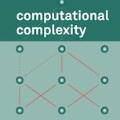Convolution neural networks (CNNs) have shown great success in various applications. However, the computational complexity and memory storage of CNNs is a bottleneck for their deployment on resource-constrained devices. Recent efforts towards reducing the computation cost and the memory overhead of CNNs involve similarity-based passive filter pruning methods. Similarity-based passive filter pruning methods compute a pairwise similarity matrix for the filters and eliminate a few similar filters to obtain a small pruned CNN. However, the computational complexity of computing the pairwise similarity matrix is high, particularly when a convolutional layer has many filters. To reduce the computational complexity in obtaining the pairwise similarity matrix, we propose to use an efficient method where the complete pairwise similarity matrix is approximated from only a few of its columns by using a Nystr\"om approximation method. The proposed efficient similarity-based passive filter pruning method is 3 times faster and gives same accuracy at the same reduction in computations for CNNs compared to that of the similarity-based pruning method that computes a complete pairwise similarity matrix. Apart from this, the proposed efficient similarity-based pruning method performs similarly or better than the existing norm-based pruning methods. The efficacy of the proposed pruning method is evaluated on CNNs such as DCASE 2021 Task 1A baseline network and a VGGish network designed for acoustic scene classification.
翻译:共振神经网络(CNNNs)在各种应用中表现出了巨大的成功。然而,CNN的计算复杂性和存储存储存储对于在资源限制的装置上部署它们来说是一个瓶颈。最近为降低CNN的计算成本和存储管理成本所作的努力涉及类似性的被动过滤过滤处理方法。基于相似性的被动过滤处理方法计算过滤器的双向相似性矩阵,并消除少数相似的过滤器,以获得小型的CNN。然而,计算双向相似性矩阵的计算复杂性很高,特别是当螺旋层有多个过滤器时。为了降低获得对齐性相似性矩阵的计算复杂性,我们建议使用一种高效的方法,即完全对齐性相似的矩阵仅与其几栏中的一些栏相近。提议的基于相近性基点的被动过滤处理方法比以近似性过滤系统分类法要快3倍,在计算中同样精确地计算CNNMNM的类似性矩阵,而基于相近性平流的平整法方法则比目前提议的直径直径直径直径直径直径的网络矩阵方法要好。


